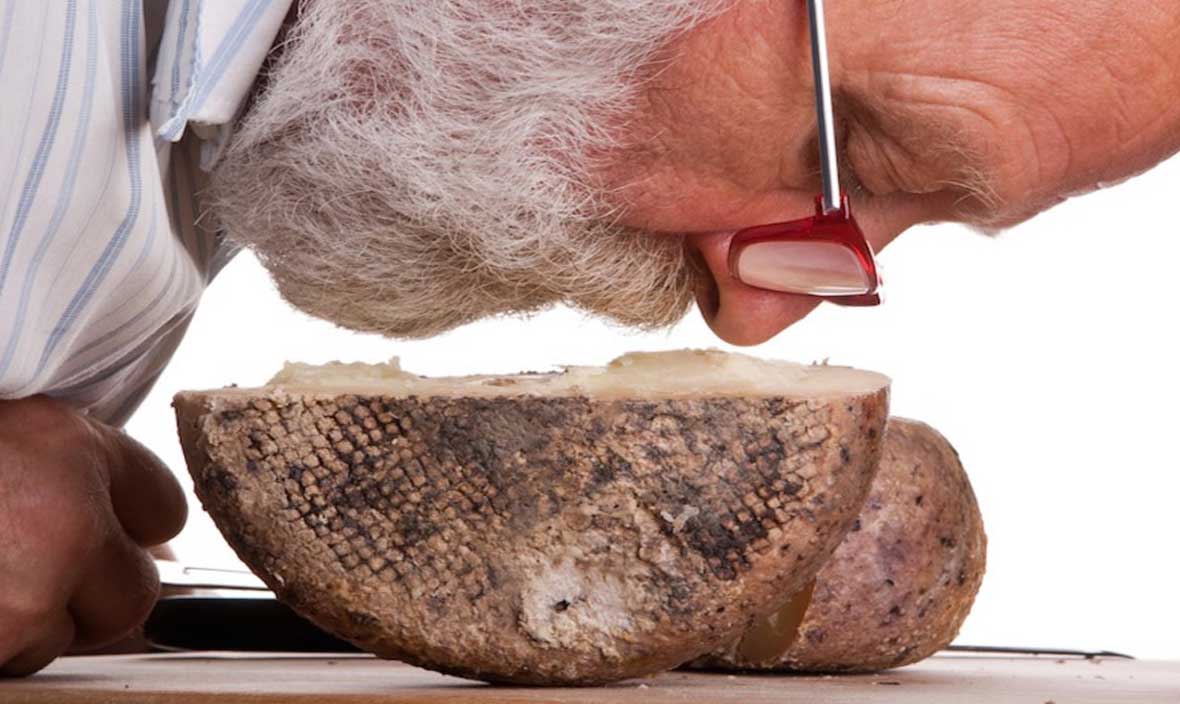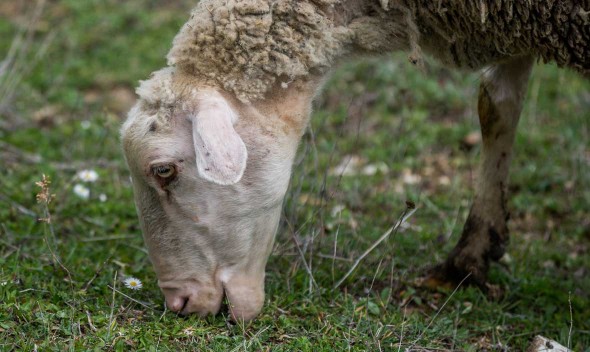Cheese sorts are very different from each other, even when they are labelled by Farmers’ Cooperatives. Cheese expert Renato Brancaleoni reveals for us the secrets to read cheese labels properly when we want to buy a quality product.
The French boast about their 365 cheese varieties, one for every single day of the year. In Italy we just haven’t been as good as them in promoting the hundreds of cheese types we produce from the Val d’Aosta to Sicily. In our supermarkets, the range is not very wide and it is normally limited to industrial products. As such, the confusion about Italian cheese offer is still considerable. On the one hand, we are frightened by media’s alarms, like those about powdered milk cheese, on the other we have learnt to trust Farmers’ Cooperatives (“consortia”) and so we do not care to learn more about dairy diversity. An example? Only a few know that cheese has a seasonal nature, a sort of “terroir” like wine. Behind brands like “Grana Padano” or “Parmigiano Reggiano” (just to quote a couple of famous examples) there are a number of producers very different from one another. This is what Renato Brancaleoni expains in an interview (see also “Caseus – The Great Book of Italian Cheeses”). Brancaleoni is an experienced cheese ripener and professor at the prestigeous cooking school ALMA. He was born “into the profession” as he comes from a family that for over 250 years has lived in Roncofreddo, in the middle of an area where the renouned Formaggio di Fossa cheese in traditionally produced.
Terroir, not only brand.
The average consumer does not know much about cheese -says Brancaleoni- not even about Parmigiano and Grana Padano, i.e. the varieties that people know and eat most. They just ask for “Parimgiano”, some maybe specify a certain number of months for ripening. Actually, behind a cheese brand there are about 400 hundred producers, that may operate in an area ranging from the surroundings of Mantova to Garfagnana, which means different conditions, different kinds of pasture, different sorts of milk, different cows, different types of breeding. In one word: different cheeses. The producer is the subject that makes the difference. The producer is indicated on the cheese, but only by a number code, not by name. For each cheese variety, there are good and bad producers. A Consortium label guarantees over provenience, poroduction methods and standards, but does not certify the taste or the smell of a product.
Brands identiy a pre-determined protocol, but the origin of raw materials and the dairyman’s hands have nothing to do with the prodution methods. Cheese has the personality of his dairyman: on each cheese piece, they should print the dairyman’s face!
Important biodiversity factors are the area of provenience of the milk, the place where the dairy is located, the specific breed of the animals producing milk, the method of cheese making (raw milk or pesteurized milk processing).
Bettelmat cheese from Val Formazza, located north of Crodo, is a raw milk cheese with unique taste, which is given by “mottolina”, a sort of grass that grows only in that area.
Why choosig DOP cheese
35% Italian cheese is made with foreign milk. DOP cheese is made with Italian milk only. Industrial cheese gives the benefit of the doubt. Cheese made in small dairies -which the French refer to as “fermier”, i.e. artisanal cheese, made by farmers who have their own livestock and process their own milk- in Italy are sold only in special shops or markets, whereas in France you cna find them also in large supermarkets. DOP cheese always ensures a good quality/price ratio.
Why raw milk is better
Cheese made with raw milk preserves aroma traits, which are 90% destroyed after pasteurization. After all, a dairy industry that processes 100 000 liters milk a day cannot afford to keep such a large amount of bacteria living, whereas an artisan who processes 100 liters runs much lower risks and has a more careful control
We can use the example of two mass products made with raw milk, like Bitto cheese and Parmigiano cheese.
In Italy, the law says that milk can be made only with fresh milk (never with powdered milk or frozen products). In all the other European countries, powdered milk and frozen products can be used in the cheese making process, because these countries have extra stocks which tey need to transform. It is a way to cut down the costs of very large and standardised productions.
If we want to adapt and legalise the use of powdered milk, we should print on the label the data about origin and possible presence of powdered milk. This would not be unfair concurrence, but mere freedom to choose.
Cheese is a seasonal product
Animals living according to the rythm of nature, grazing in wild pastures, cannot possibly produce the same milk every day. Cows produce milk all year round, but the cheese produced in spring taste better. This year, as a result of the weather conditions, the best cheese will be produced from march to may.
This implies that it will be actually on the market in summer, i.e. after 30-60 days ripening. Differently, mountain pasture cheese reach their best from 10 July to 10 August and become ready to be sold in autumn.
For certain varieties of cheese, it is necessary to look at the manufacturing date. In some periods of the year, goat’s and sheep’s milk run short. Consequently there will not be much goat cheese from late summer to February and the supplies of fresh sheep cheese will be poor In large farms goat’s milk is produces all yeat round (like in France), thus altering the animals’ biorythm! Industrial products cannot afford taste variability for commercial reasons. Industries need to have a product that tastes the same every day in August as well as in December. Consequently, they need to pasteurize milk and add enzymes to standardise the taste.
How can cheese cost 6€ per kilogram?
“I could explain how cheese can reasonably cost 26 euros per kilogram, but I have no clue about how they can make some profit with 6 euros!”
This post is also available in: Italian





